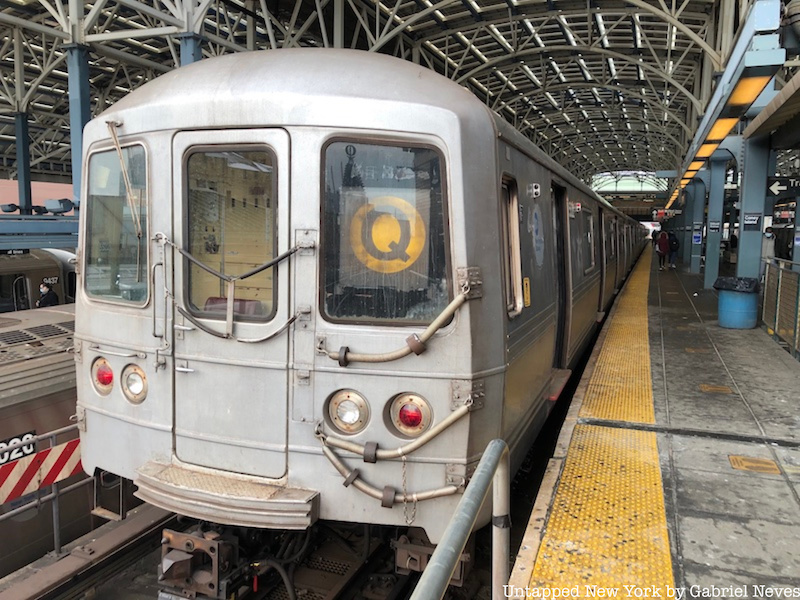
Welcome to another installment of Untapped New York’s “End of the Line” series, this time on the Q train, which runs from 96th Street on the Upper East Side down to Coney Island-Stillwell Avenue in Brooklyn. The Q has been in operation since 1920, when it was operated by the Brooklyn-Manhattan Transit Corporation (BMT). The segment of tracks running from Prospect Park to Coney Island was originally part of the Brooklyn, Flatbush, and Coney Island Railways that utilized steam-powered locomotives. Service on the railway began in 1878 and was modified a few decades later with electrified third rails to accommodate the introduction of subway car units to the system.
Even though the Q train has provided subway riders with service on the Brighton Line and on Broadway in Manhattan throughout its existence, it also ended up on a few other sectors of the system in Queens. The “1 Brighton Local”, as it was labeled in its early days, ran from Coney Island-Stillwell Avenue and terminated at 57th Street-7th Avenue station in Midtown. In 1949, the designated 57th Street terminal was moved to the Astoria-Ditmars Boulevard station on the newly constructed IRT Astoria Line. Throughout the 1950s and ’60s, the Q train was expanded to serve passengers as far as Jamaica along the IND Queens Boulevard Line, terminating at the Jamaica-179th Street station that now serves the F, and in some cases the E. The Q train had returned to serve along the Astoria branch by the early 2000s until the MTA decided to reinstate the W line. This subsequently led to the Q’s northern terminal being moved back to the original setup from the early 1920s at 57th Street-7th Avenue.
The line was finally extended to its current terminal at 96th Street back in 2017 as part of the MTA’s Second Avenue Subway project. The additional stations along the route were crucial in reducing both congestion along the Lexington Avenue Line and the dependency on buses for commuters in the Upper East Side. Construction along Second Avenue had started a few decades ago, but remained incomplete when the city fell into an economic crisis in the early 1970s. The first phase of the project cost around $4.5 billion and added new stations at 72nd Street, 86th Street, and 96th Street. Work was also done on the Lexington Avenue-63rd Street station to offer riders a connection to the F line. The remaining phases of the Second Avenue Subway project will look to extend the line further uptown to 125th Street in Harlem, and downtown to Hanover Square in the Financial District.
The rolling stock on the Q train consists primarily of R46 subway cars (168 units, 21 complete trains) and one complete train of R68 units. The R46 was built by the Pullman Standard Company and first went into service in 1975. Each subway car is 75 feet long and is the joint longest individual unit out of the NYC Subway’s entire rolling stock. These units can be found on other lines in the system like the A, C, N, and W trains. They are expected to be decommissioned in the next few years by the MTA to make way for the new R211A units that were recently purchased from Kawasaki Heavy Industries.
Now, let us take a look at the first terminal on the Q train: 96th Street!





